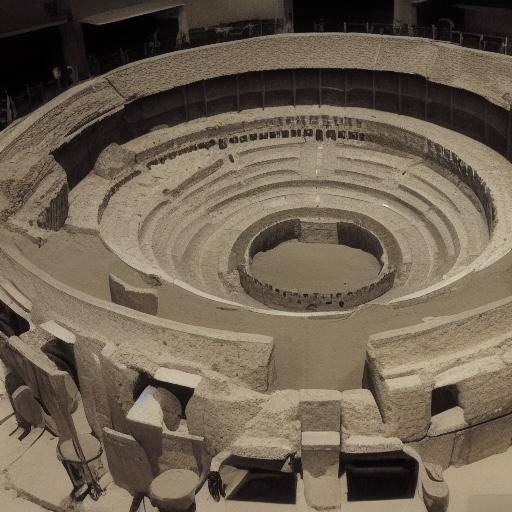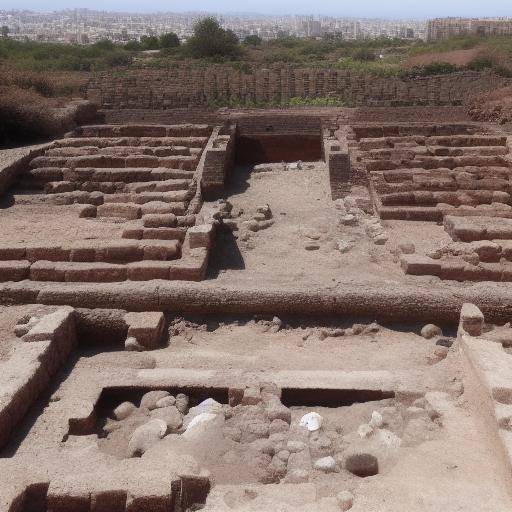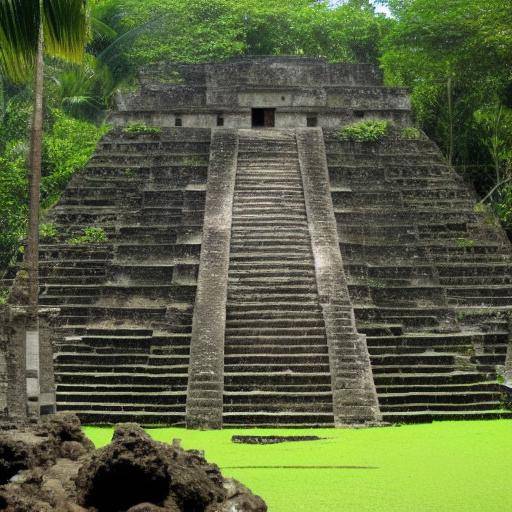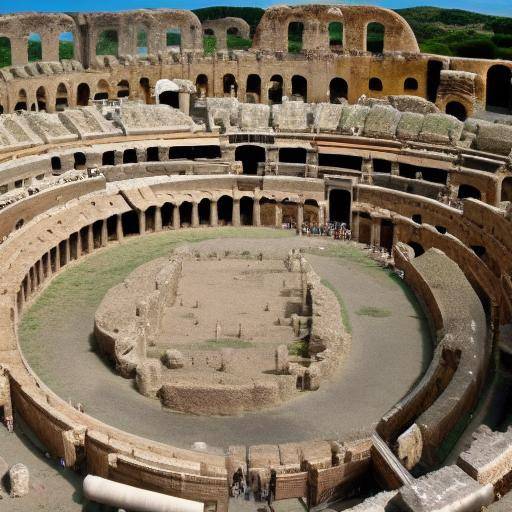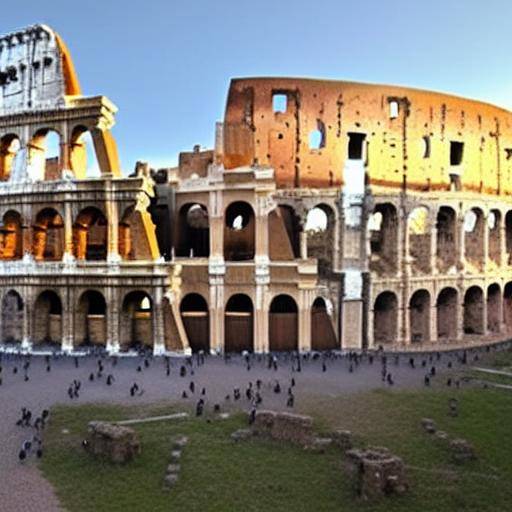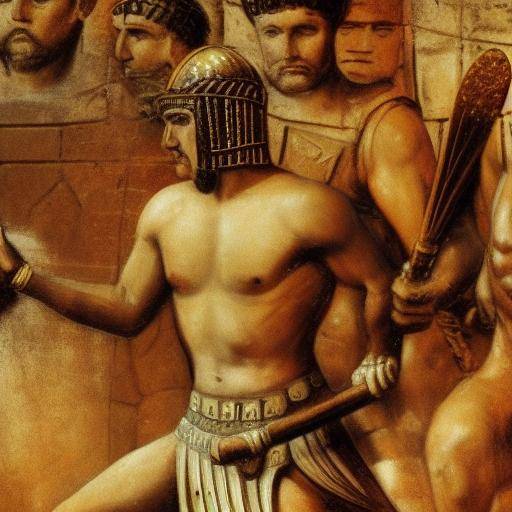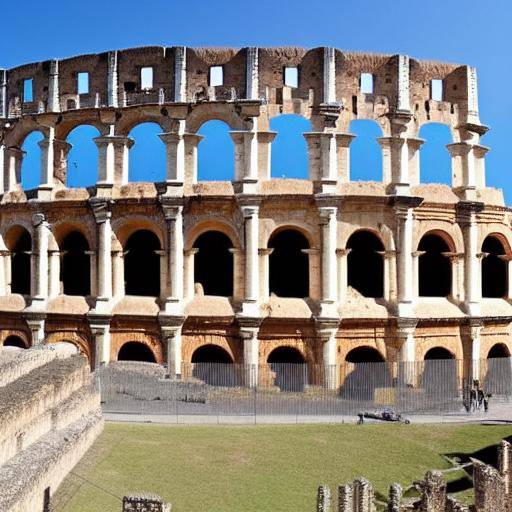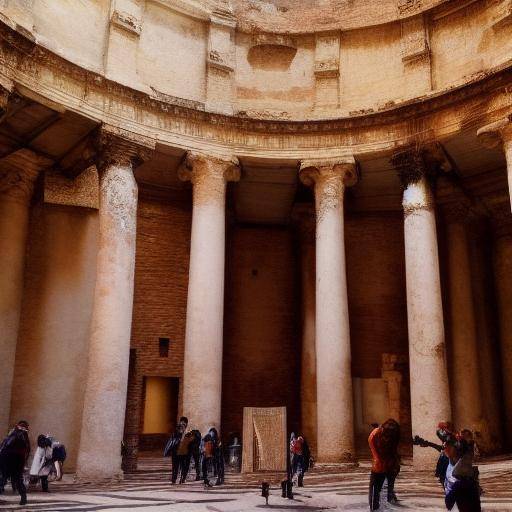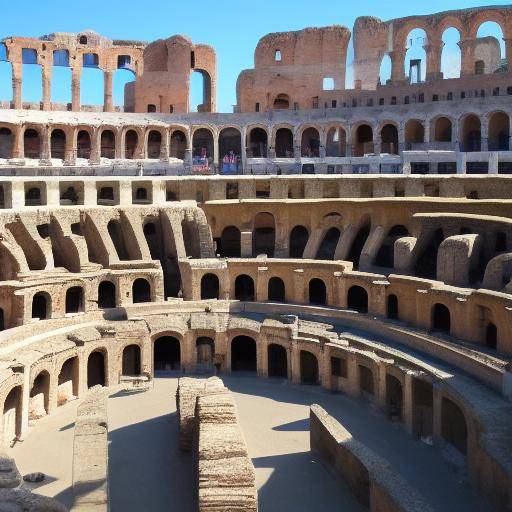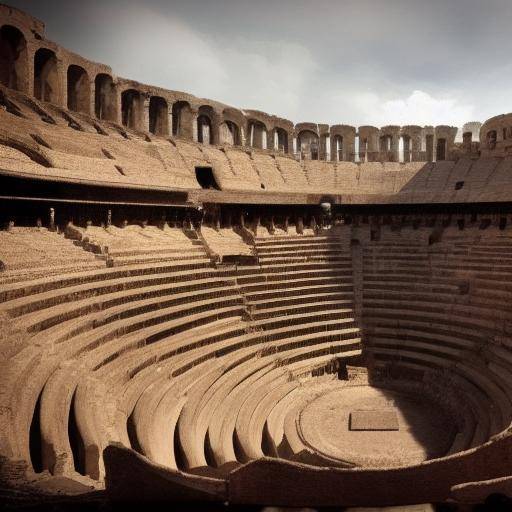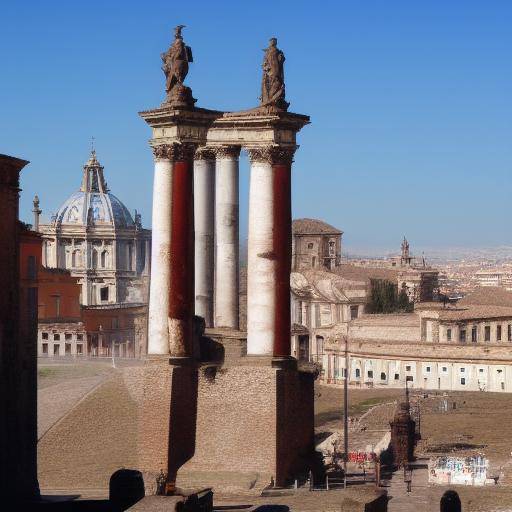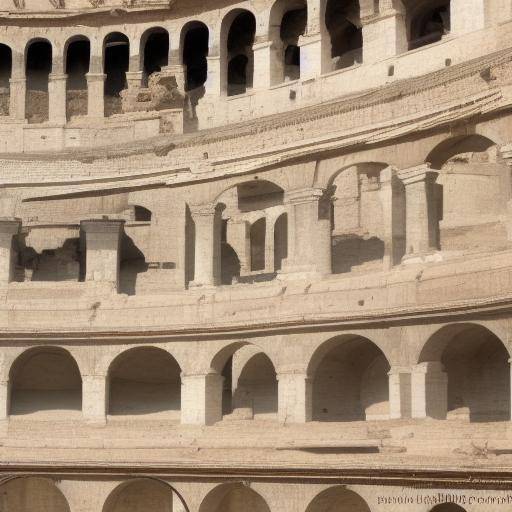
The Colosseum, an imposing emblem of imperial Rome, represents the architectural grandeur and rich history of a legendary era. His story is intertwined with the greatness of Rome and the intrigue of ancient history. In this detailed guide, we will explore the origins, architecture, history and contemporary relevance of the Colosseum in the context of the glorious imperial Rome.
Introduction
The majesty of the Colosseum lies not only in its imposing ruins, but also in its intricate stories that transport us to the apogee of the Roman Empire. In this deep dive, we will guide you through fascinating history, architectural splendour and the persistent influence of the Colosseum today. You will discover not only the facts, dates and figures, but a profound understanding of how this architectural wonder keeps leaving its mark on the modern world.
History and Background
The Colosseum, originally known as Anfiteatro Flavio, was built in the 1st century AD by the Vespasian and Titus emperors in the heart of Rome. This spectacular monument served as a stage for wild shows that included gladiator fights, beast hunts and simulated naval battles. Its construction witnessed an innovative engineering that challenged the limits of the architecture of the time.
Over the centuries, the Colosseum has survived earthquakes, looting and centuries of wear, becoming a powerful metaphor for the resistance and grandeur of Rome. Today, it remains an iconic symbol of ancient Rome and attracts millions of visitors from around the world seeking to connect with its immortal legacy.
Analysis in Deep
The Colosseum, as an architectural wonder, challenges the conventions of its time and remains a source of inspiration for modern architects. Its innovative design, which could accommodate more than 50,000 spectators, established a standard for contemporary stadiums. Despite its antiquity, the sophisticated construction techniques used in the Colosseum remain the subject of study and admiration in the current architecture.
Comprehensive review
In exploring the Colosseum, we not only immerse ourselves in the history of Rome, but also reflect on its lasting impact. This ancient wonder serves as a reminder of humanity's impressive ability to create, resist and persevere through difficult times.
Comparative analysis
When we compare the Colosseum with other emblematic monuments of Rome, such as the Roman Forum and the Pantheon, we can appreciate the diversity of architectural styles that coexisted in imperial Rome. Each structure tells its own story, but together they form a complex tapestry that reveals the greatness of a past era.
Practical Tips and Accessible Tips
If you are planning a visit to the Colosseum, make sure to book your tickets in advance to avoid long rows. It also considers hiring a tour guide that can provide you with a deeper view of the history and architecture of this iconic monument.
Ideas and Views of Industry Experts
The renowned Italian architect Renzo Piano praised the Coliseum's design as an engineering prowess that transcends time and space. His reflections on modern architecture offer an intriguing view on how the principles of the Colosseum continue to inform and challenge contemporary architects.
Case Studies and Real Life Applications
The recent restoration and conservation efforts of the Colosseum have demonstrated the continued importance of architectural stewardship for present and future generations. The combination of modern technology and respect for history has allowed the Colosseum to maintain its splendor and fascination.
Future Trends and Predictions
As architecture and tourism evolve, the Colosseum will remain a beacon of inspiration and a focal point for sustainable architectural innovation. Efforts to preserve their legacy will be fundamental to ensure that this ancient wonder lasts for future generations.
Conclusion
The Colosseum is an architectural prowess that transcends time and space, taking us to a journey through the greatness of ancient Rome. By understanding its history, its architecture and its continued influence in the modern world, we can appreciate the lasting magnificence of this emblematic monument.
FAQs
What's the story of the Colosseum?
The Colosseum, originally known as Anfiteatro Flavio, was built in the 1st century AD by the Vespasian and Titus emperors in the heart of Rome. It was the scene of massive spectacles, gladiator fights and beast hunts.
What is the architectural importance of the Colosseum?
The Colosseum is an architectural landmark due to its innovative design that could accommodate more than 50,000 spectators. Its construction has inspired architects throughout the centuries.
Why is the Colosseum so iconic?
The Colosseum represents the greatness and resistance of the Roman Empire. His image has endured through the centuries as an emblematic symbol of ancient Rome.
What are the challenges of preserving the Colosseum?
The conservation of the Colosseum presents unique challenges due to its antiquity and the preservation of its original structures. However, modern conservation efforts are ensuring their legacy for future generations.
How can I visit the Colosseum?
Visitors can book tickets for the Colosseum online and can also choose a guided tour to get a deeper understanding of their history and architecture.
What impact does the Colosseum have today?
The Colosseum remains an important cultural, tourist and historical point of reference that attracts millions of visitors every year and continues to influence contemporary architecture and culture.
With this detailed guide, we hope to have provided an enriching vision of the Colosseum and its importance in the architecture and history of imperial Rome. Whether you plan to visit this magnificent monument or simply want to broaden your understanding of the greatness of ancient Rome, the Colosseum remains an inexhaustible source of wonder and admiration.

